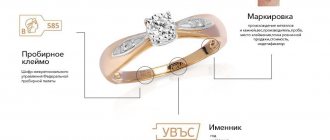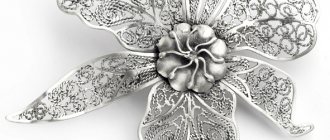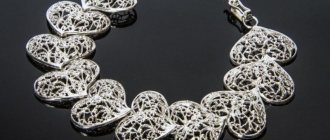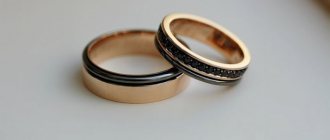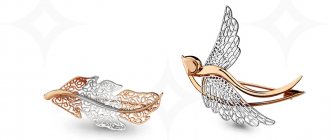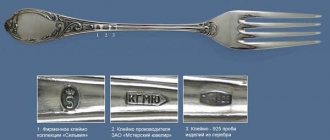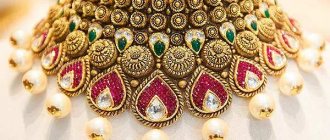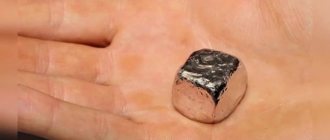Cold enamel
Cold enamel received its purpose due to the peculiarities of the application technique. Before applying to the jewelry, liquid enamel is prepared, which is mixed with catalysts. This produces a special paste, which is applied to the decoration. A thin tool is used for application. After application, the enamel dries for several days.
To increase the strength and durability of the enamel, ultraviolet light can be used to harden it. This allows you to speed up the drying procedure of the enamel. Cold enamel is quite easy to work with. In addition, the finished product rarely chips. Inexpensive jewelry is most often made using the cold enamel method.
Types of cold enameling
Cold enamel is a kind of fiberglass, it is easy to apply. There are three types of cold enameling:
- Two-component cold mixture. It is simply poured onto the decoration. First, dilute the mixture to a cream consistency by adding a catalyst to it. Then, using a tool, they apply it to a metal surface. In order for the applied mixture to harden, it is kept for 48 hours at room temperature, then kept for 20 hours at a temperature of 70 ° C. The surface will look like ceramics. The shades of this glaze can be mixed.
- Heat-curing glaze. It is similar to hot pour, but is fired at a temperature of 160 °C. A distinctive feature is that it is not polished so as not to leave matte marks on it. This glaze is not very strong. If you press it hard with something, it will leave a dent.
- Light-curing fill. This process is similar to filling teeth with liquid paste. The applied glaze is irradiated using an ultraviolet lamp, after which the enamel hardens. This technique is most often used to repair chips in jewelry. The light-curing mixture is quite hard and is considered intermediate between cold and hot enamel.
Hot enamel
To obtain a more beautiful decoration, you need to use a complex technique of hot enamel. However, using hot enamel requires special skill and special equipment. To do this, you need to dilute glass powder with water and draw patterns on the decoration like paint. After this, the product must be dried in a special oven so that air bubbles do not appear on the surface of the decoration. Therefore, products are fired at temperatures up to 900 degrees.
Jewelry can be quite complex. In this case, the master may need to apply several dozen layers of enamel, each of which must be fired in a kiln. The temperature at which the enamel is fired is selected based on the personal preferences of the master. That is why each product made using hot enamel has an individual design.
Where to buy jewelry creations with hot or cold enamel
Professional jewelers apply “paint” to the surface of precious metals. Accordingly, such products are sold in jewelry stores and workshops. You should not pay attention to offers “from unknown sources.” Jewelry, like classic versions with stones, must have jewelry tags. They will not indicate the composition of the enamel, but there will certainly be information about the type of alloy and the weight of the jewelry.
Follow the advice on choosing and caring for jewelry with enamel, then it will last you a long time. Remember that all such jewelry is made by hand, so their cost is not so low.
Methods of applying enamel to jewelry
There are several basic techniques for applying enamel to jewelry. The most popular include:
- Cloisonne enamel. In this case, it is necessary to draw the outline of the future image on metal plastic. It is along this contour that thin metal strips will be soldered. The resulting cells are filled with powder, from which the enamel will be made. At this stage, the product is fired in a kiln, so the enamel melts, filling the metal partitions. After that, you just need to sand and polish the product.
- Stained glass enamel. The features of the technology are similar to the previous one. Stained glass enamel is also created by filling the openwork frame with enamel powder. However, in this case, a metal plate is not used as a base. In this case, colored translucent enamel is used, which, after firing, plays in the sun, reminiscent of stained glass. But creating stained glass enamel is difficult work. And a small mistake can lead to the need to start the work all over again.
- Picturesque enamel. This type of enamel involves the need to paint a real picture on a piece of jewelry. The metal base will act as a canvas, and the enamel will act as oil. After firing, the painted enamel acquires depth.
Enamels are also divided according to their appearance. According to this parameter, they can be divided into transparent, transparent colored, opal and opaque.
General information on working with hot enamel for beginners.
Have a nice day, everyone!
Lately we have seen increased interest in working with hot enamel. Previously, only artists who studied in specialized art institutions worked with enamel, and we did not have to answer the simplest and most general questions about working with it. Now there is a need to post some information and recommendations for working with hot enamel.
This is an annotation from the manufacturer of English enamel, translated and modified by us. I repeat, the information is extremely general and brief, which will not answer all the questions that beginners have. But they will at least somehow help at the initial stage for those who decide to independently master this art.
Application methods
Dry method of applying enamel.
The dry enamel method is the most widely used and is preferred where the coating must be uniform. The metal is coated with enamel fixative using a soft brush or spray. A clean sheet of paper is placed on the work area to collect excess enamel. A small amount of enamel powder is placed in a plastic sieve. Blanks for enameling are placed on paper, placing it on sticks (pencils). All other auxiliary tools should be within easy reach of your hand. Place a sieve with enamel over the workpiece and lightly tap the sieve with your index finger to evenly distribute the enamel on the surface to a thickness approximately equal to the thickness of the metal.
In the first photo, a special enamel fixative is applied to the plate. At the second stage, the enamel is sown through a sieve onto the fixative. The fixative, when dried, holds the enamel. This ensures the plate moves without possible loss of enamel.
Wet method of applying enamel
This method is preferred where large surfaces are not required. An enamel suspension is prepared by mixing a small amount of water and powdered enamel. The suspension is applied to the metal surface using a spatula or brush. Romantic people and vintage lovers can use an old goose feather with the tip cut off.
After each of the above methods, the enamel must be completely dry before firing.
You cannot dry the enamel with a hairdryer! To dry quickly, place the product with enamel on the top of a heated muffle furnace.
Enameling techniques
To make products with enamel, both modern and traditional techniques are used.
The wet enamel process can be used to create a design directly onto metal or onto a previously fired base layer. This method is used in the following traditional techniques.
Cloisonne enamel (Cloisonn)
Here the enamel areas are separated by copper or silver partitions which are soldered to the base metal. The Cloisonn type can be made by pressing the septum into a layer of unfired enamel (interesting, but we haven't tried
After firing, the enamel holds the partitions and takes on the function of hard solder.
Soldering of partitions is not always required, mainly on volumes. On flat products, partitions are fixed using BF medical glue, both on pure metal and on the base layer of enamel.
Stained glass, plicajure
The method is essentially the same as cloisonne enamel, but without the base metal. The design of the partitions is held in place by fired enamel, which is placed on a mica sheet during firing.
Notched:
photo of the work of the workshop “Speha Dar”
In this technique, enamel is fired in recesses that are etched with acid onto the surface of the metal. There are also other ways to produce recesses in metal, such as pressure, engraving, casting.
These are not all the ways and methods of working with enamel.
The dry method of applying enamel (spreading) is well suited for working with stencils
On the fired base layer, you can create a design, decorate it with colored enamels and liquid preparations of precious metals, or use small pieces of crushed enamel, thongs (thin threads of enamel). They can be laid on the base and during firing in the kiln, when the enamel has already begun to melt, the colors can be mixed with a special tool, creating a unique design. This method can produce amazing results.
Burning
The oven must be heated to a temperature of 780 - 800 ° C, at this temperature the chamber turns red. The pieces should be carefully placed on a suitable firing support (stainless steel is ideal) and the entire structure placed into the firing chamber using a spatula or grip.
The kiln door must be closed and the firing can be observed through a special window. The surface of the enamel will turn black and then become bright red like the oven chamber and it will have a shine.
Wait a few seconds past this point and then remove the rack from the oven, placing it on a fireproof pad to cool. The firing time depends on the size of the product; for jewelry it is 2-3 minutes.
After firing, all uncoated metal surfaces will be covered with oxide - scale. This can be prevented by coating clean areas of the metal with T39 Anti-Scaling System. The product is easily washed off. In translation books on enamel, this product is also called binder.
Separately, I would like to dwell on the firing temperature. 800 degrees is a slightly arbitrary value; 10 degrees lower or higher will not play a tragic role during firing. When sending the product into the chamber, the temperature necessarily drops by 60-80 values; it will rise to the set value in about a minute. If you burn at a temperature of 750 degrees, you will do it a little longer, if you set it to 850, it will be faster. The end of firing is determined visually.
Contremal
Metals and enamel have different linear expansion characteristics and after firing there is a possibility of cracks appearing in the enamel layer. To balance the tension in the enamel and metal, counter-enamel is used, enameling the back side of the product. The Milton Bridge enamel line includes a special T237 enamel. Contramal can be applied either dry or wet. The counter-metal is applied and fired first to ensure further successful firing of the product.
Firing stands
All kinds of firing substrates can be bent from stainless steel mesh (non-magnetic). The mesh can be used as a flat stand by folding the corners down to form the legs. This stand can be turned upside down and the legs are used as support points when using counter enamel. There are special stands for firing products with counter-enamel.
mesh stand
firing stand with counter-enamel
Let's add from ourselves. You don’t have to make masterpieces right away. Try simply applying the enamel in different ways onto the base and
burn . Make a palette of the colors you have.
A very useful activity, especially for beginners.))
How to independently distinguish a product with cold and hot enamel
To understand what enamel is used to coat jewelry, you need to perform simple manipulations. First, you need to press some sharp object onto the enamel in an inconspicuous place. If it is done cold, it will leave a mark. In addition, cold enamel is warm to the touch, while hot enamel is, on the contrary, cold. This is due to the fact that cold enamel is a layer of special paint, and hot enamel is glass, which at high temperatures turns almost into stone. The product, made on the basis of cold enamel, is not polished, so it has small irregularities.
Care and storage conditions
Like any jewelry, products coated with enamel have their own wearing characteristics. Negative factors that affect the service life of jewelry glaze:
- mechanical damage (chips, cracks, scratches);
- chemical exposure (household chemicals, cosmetics, sea water);
- natural phenomena (temperature changes, direct sunlight).
At home, it is possible to clean such a coating; you just need to dilute a little ammonia in warm water and clean the product with a soft brush. But only a professional can carry out more efficient and gentle cleaning. So trust a qualified craftsman, and he will take care of the beauty of your jewelry.
Storage features include keeping all products separate from each other, as sharp elements can scratch the enamel surface.
Each type of glaze is good in its own way, because they have unique features and original solutions. Even world famous brands such as Nina Ricci, Versace and Gucci boast elegant jewelry with exquisite enamel.
To be sure of the quality of the jewelry masterpiece you are purchasing, you should contact only experienced jewelers with a good reputation. is a team of highly qualified professionals who will always help in choosing and implementing the most original ideas.
Types of enamels
Enamel is a glassy coating that is obtained as a result of processing at high temperatures. Transparent glaze is used to cover gold and silver items. “Deaf” - used for a copper base.
There are the following types of coverage:
- jewelry;
- painted enamel;
- cloisonne;
- notched;
- stained glass;
- artistic.
The technique of applying Chanleve is simple. Recesses are cut out in the plate and filled with colored glaze. The deeper the recess, the darker the color in the jewelry. Craftsmen can use ready-made blanks (in costume jewelry).
Relevant products in the Online store:
Natura Siberica
MICELLAR SERIES Natural certified micellar beauty oil
299 rub.
sale
Redken
COLOR EXTEND BLONDAGE Professional ultra-pigmented purple mask for super cool shades of blonde
from 2,970 rub.
Kérastase
BLOND ABSOLU Nourishing mask to neutralize yellow shades of blonde
from 3,366 rub.
Natura Siberica
INTIMATE HYGIENE Natural certified gel for intimate hygiene
from 551 rub.
All goods
Jewelry enamel
Jewelry enamel has been known since the times of Ancient Rus'. Then it had a different name, but the principle of its application remained the same.
Enamel was used in both jewelry and decorative arts. It was used to decorate rich utensils: cups, caskets, bowls. Although many centuries have passed and technology has undergone changes, the properties of enamel are still highly valued by jewelers.
This type of coating is handmade, even if the precious jewelry itself is stamped according to factory standards. The enamelling process involves coating the surface of a precious metal with fusible glass. Enamels are distinguished by composition and application methods.
Whatever method is used: cloisonne, scanned, notched - all this has a single goal: high-quality coating of metal.
Composition and types of enamel
The glass alloy that covers the jewelry can be of varying degrees of melting, colors and type of application.
It consists of silicas and various oxides. To give a particular shade to the coating, nickel, zinc oxide or cobalt are added to the mixture. The properties of enamels are quite resistant to operation and exposure to external factors. They are durable, so they are often used in decoration. Jewelry with enamel looks very impressive.
Types of enamel coatings are divided according to the method of fastening. There are hot and cold enamels for decorating jewelry, let's look at it in more detail:
- Hot coatings. This is the method preferred by venerable jewelers. It has been used since very ancient times. To process such jewelry coating, you need a furnace that heats up to 800 degrees. The enamel powder adheres firmly to the metal base. A similar method has been used since Russian times.
- Cold coatings. This coating does not require high temperatures. This is a kind of fiberglass that is divided into two-component, heat-curing and light-curing glazes. The two-component coating is the simplest: mix in the required proportions and paint the product.
The process of heat-curing enamel is similar to hot enamel, but it requires a temperature of up to 160 degrees. However, such a coating cannot be polished; it is quite fragile. The process of attaching reflective cold enamel to a metal base is reminiscent of photofilling in a dentist's office.
The coating surface is irradiated with an ultraviolet lamp. After that it freezes. Light-curing coating is used to repair chips in jewelry.
Application methods
There are several ways to apply jewelry enamel coating to precious items. These techniques are typical specifically for colored enamels, for example:
- Clausone. This is a septal technique. Gold or silver threads are soldered on as an ornament. It resembles the filigree technique with intricate hieroglyphs.
Champlevé. The metal is drilled out on the surface of the jewelry, and the resulting holes are filled with multi-colored enamel chips. This is the oldest coating technology.- Enamel. The surface of the product is painted with a colored solution. There are no partitions or holes here. The product is covered with the required number of layers and “baked”.
Adviсe
When purchasing accessories, pay attention to cracks, bubbles and other defects. If you choose cloisonne covering, you need to know the following:
- the partition (wire) is noticeable;
- the coating layer is usually thin;
- the cost of the product is high.
In 2021, solid colors are in fashion. Accessories with white enamel will add femininity to the look. If you need to complement the image, use one product with a rich color. Earrings with enamel from the Sunlight brand will decorate a girl.
The brand’s hypermarket offers the “Charm” collection. There are many new items in it, among them there are pendants with enamel. On the silver model, the symbol of the coming year is a rooster. You can also choose other pendants from this series.
Now there are many products of domestic producers on the market. Russian enamel jewelry products can compete with Italian brands.

